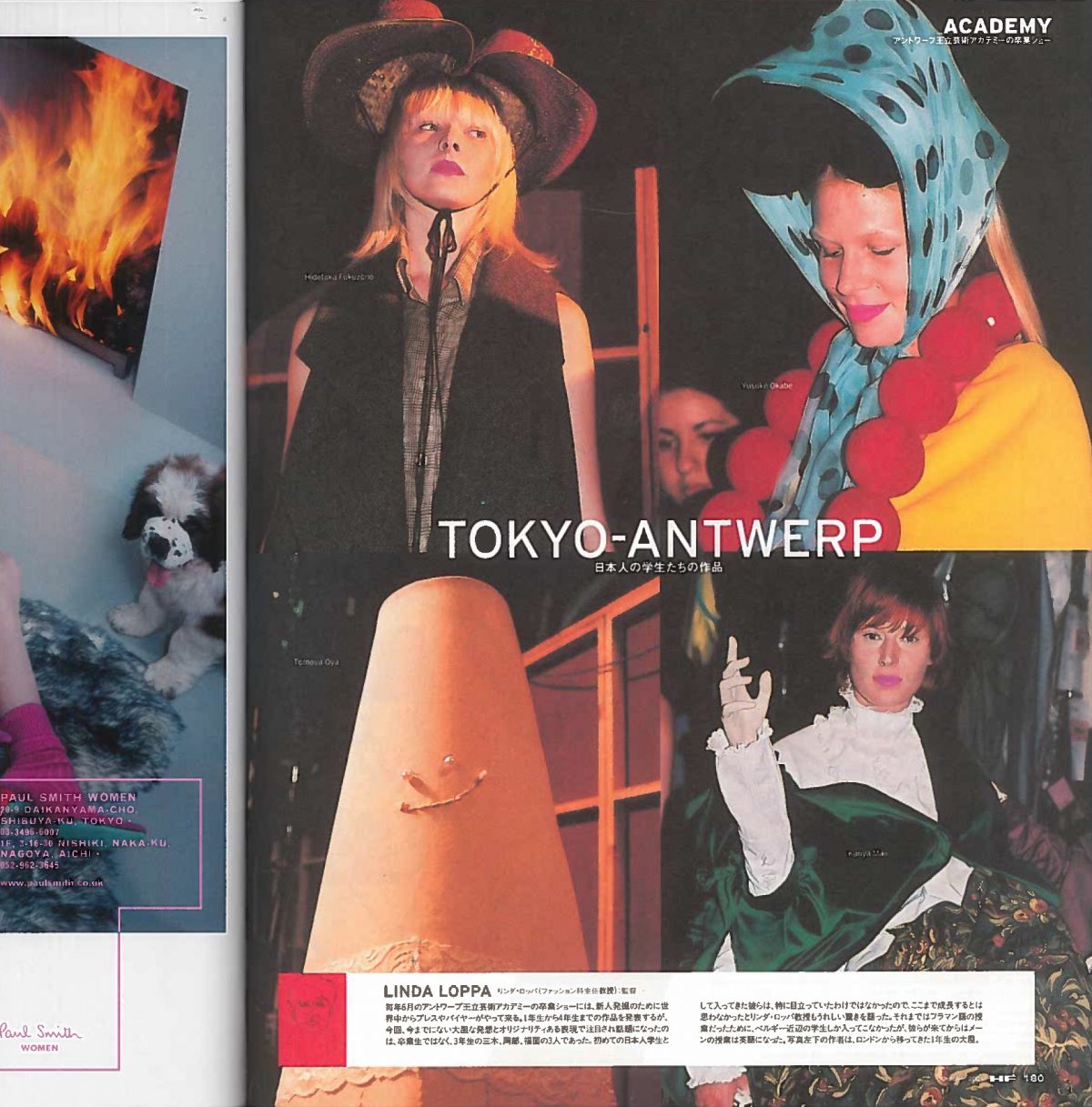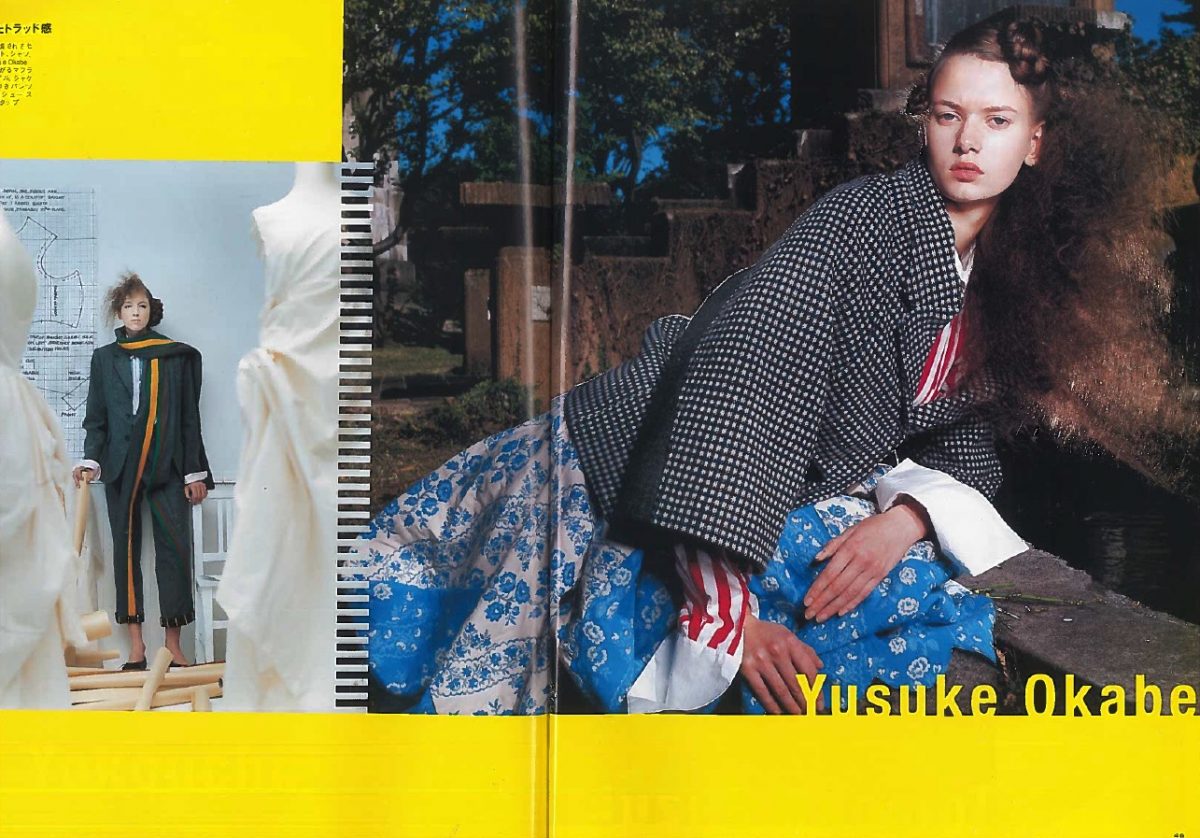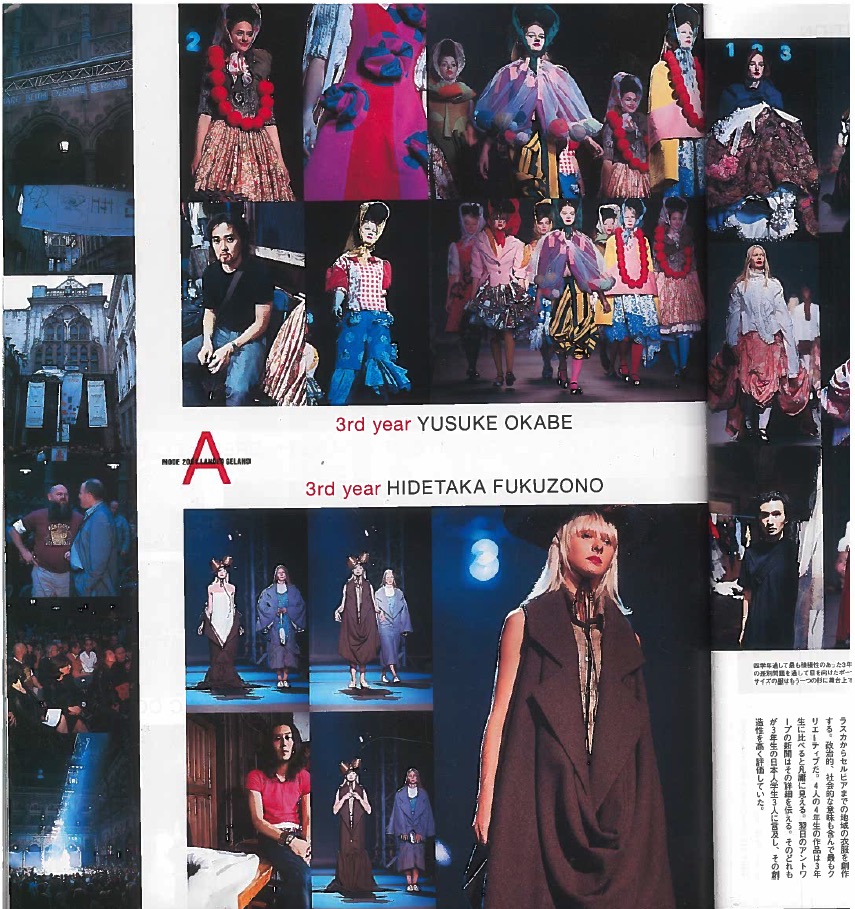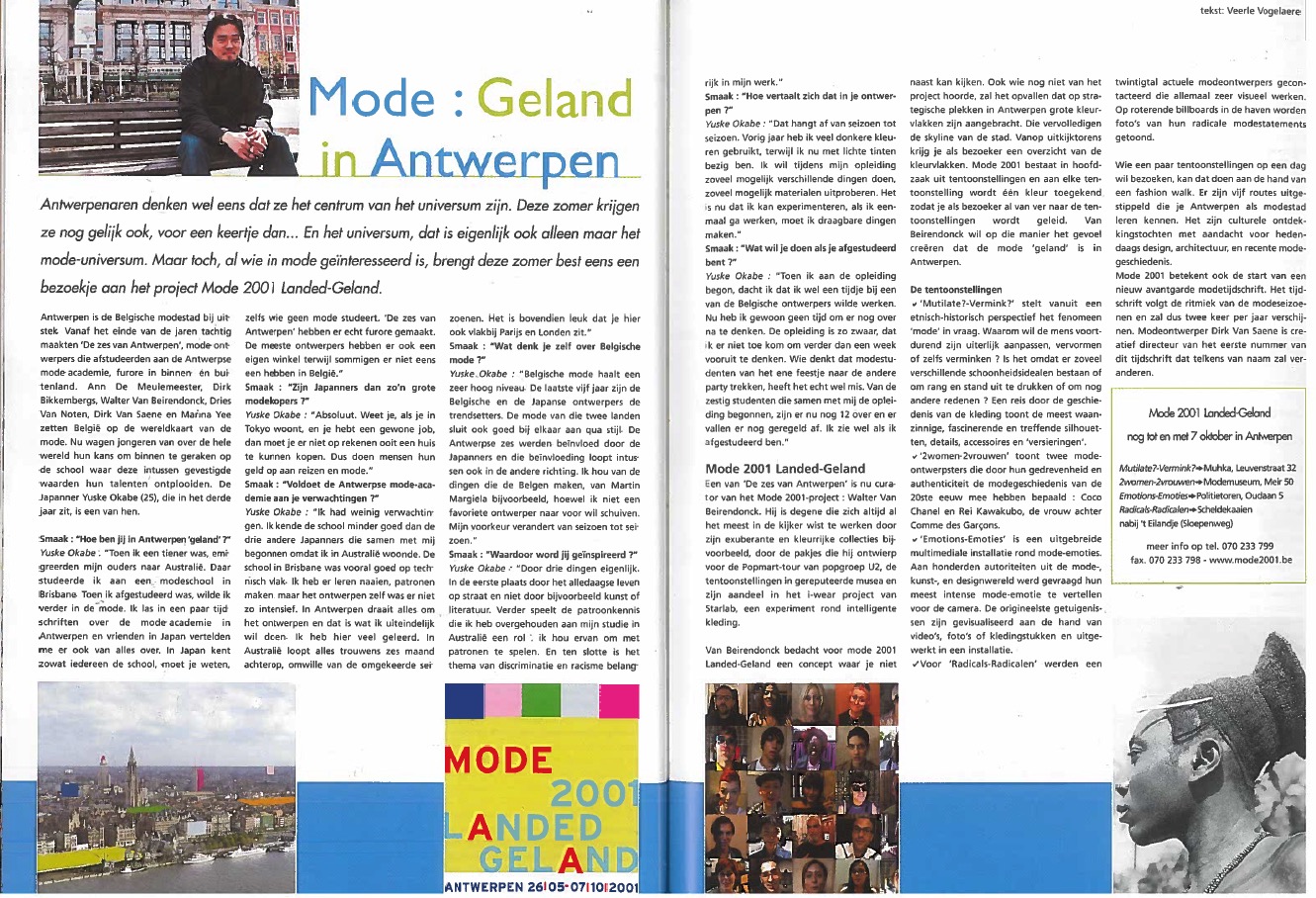MISHIMAGAZINE #9 Reality of “International Society” – YUSUKE OKABE
The reality of the Global Society: From Antwerp to New York
Interview with – YUSKE OKABE
My memory is a bit hazy, but I believe I was either a freshman or sophomore in high school. It was around 1999 or 2000. I happened to open a fashion magazine at a bookstore and came across an article about the Royal Academy of Fine Arts Antwerp in Belgium where the famous Antwerp Six came from. The article mentioned that there were three Japanese students enrolled in the fashion department of this academy. One of them was named Yusuke Okabe, a name that stuck with me because it was the same as mine.


 In around 2000, an article about Japanese students in Antwerp featured Yusuke Okabe along with two others.
In around 2000, an article about Japanese students in Antwerp featured Yusuke Okabe along with two others.
In the fashion world, every insider simply says “Antwerp” which always refers to the Royal Academy of Fine Arts. This prestigious art university, where painter Van Gogh graduated, has produced numerous famous talents from its fashion department. For instance, Martin Margiela, who dominated contemporary fashion in the ’90s and continues to influence the field even after his retirement, is an alumnus. Other notable graduates include Dries Van Noten, Ann Demeulemeester, Walter Van Beirendonck, who now heads the fashion department, Kris Van Assche, the former director of Dior Homme, and Demna Gvasalia, the Georgian designer behind Vetements and the creative director of Balenciaga. Even if you consider yourself distant from fashion, it’s safe to say that none of the clothes we wear today are untouched by the influence of Antwerp designers. Although, as a high school student living in the remote Tohoku (North-East) region, I couldn’t afford Margiela’s clothes, they were popular among artists and some cultural figures at the time. In fact, wearing his clothes in certain communities once signified a certain level of cultural sophistication.
I thought the school that produced such people was a world apart from mine, but I was surprised to learn that there were three Japanese students enrolled there. The idea of studying fashion, especially abroad in a place with no other Japanese students, was unimaginable to me, living in the countryside. I was also amazed at the high level of work these three students produced. I remember opening the Netscape browser on a dimly lit school library computer to research the town of Antwerp and the school.

 A look from a student work featured in a Japanese magazine. Apparently, they were also interviewed by Belgian media at the time.
A look from a student work featured in a Japanese magazine. Apparently, they were also interviewed by Belgian media at the time.
However, life is strange, and unexpected things happen often. About ten years later, I found myself working at the company Comme des Garçons, which I had seen in magazines during high school. A few days after I joined Comme des Garcons, I learned that Okabe, whom I had read about in magazines, had also worked there until a few years ago. Five more years later, I established my own company, Kleinstein Co., Ltd, and worked with Okabe in person. It was 16 years after I first saw his article in a magazine.
I first met Okabe in the summer of 2013. During a business trip to New York, I was invited to a dinner gathering of Japanese fashion professionals living there, and he was sitting across from me at the table. Although we had never met before, there was no barrier to communication between us, as we had both worked under the same company and shared similar ethics. We discussed various topics. Graduating from Antwerp, which is one school, and from Comme des Garçons, which is another, Okabe excelled in both design and technical skills. He had job offers from all over the world and was working for a luxury label, Vera Wang, in New York at the time when he accepted one offer. A year after our conversation in New York, he moved to Milan, a year and a half later to Paris, then to Stockholm, this time to join Raf Simons’ team and back to New York, and now he was in Milan on Bottega Veneta’s team. Our conversations through Messenger are always about work, but in a sense, they are also exchanges of reality and insights about the “international society.”
Fashion’s appeal lies in the opportunity to interact with a wide range of people, crossing social classes, nationalities, and races. Part-timers at sewing factories, students, chemists at rubber factories, drivers and warehouse staff of logistics companies, glamorous PR professionals, stylists, financiers, executives, contemporary artists, and celebrities—by interacting with such diverse and multinational individuals, you can feel the world’s movements firsthand. Almost all of these interactions involve some form of interest, making fashion unique in this regard. When involved in fashion, which is globally centered, you are inevitably thrown into the concept of the “global society” before even being conscious of it, and you naturally find yourself immersed in a sea of intricate communication. Working in a studio in New York, a melting pot of races, like Okabe, means expanding diversity in upbringing, environment, race, religion, educational background, age, and profession. The realities of each country glimpsed through work differ starkly from the “international society” described by media and commentators. The concept of the “international community” is not as rare as the pundits make it out to be, and the situation is neither as dire nor as optimistic and neutral as the press makes it out to be. Between commercialism and the creation of fashion, tragedy like comedy and comedy like tragedy are generated and emerge as one scene of reality, and the sun sets and dawns.
YUSKE OKABE
After graduating from the Royal Academy of Fine Arts Antwerp in 2002, Yusuke Okabe joined Comme des Garçons, where he worked as a pattern maker on Rei Kawakubo’s team. He went on to work as a designer and pattern maker at Ann Demeulemeester in Antwerp, Vera Wang in New York, and Celine during Phoebe Philo’s tenure as director. Later, he moved to New York and, in 2016, joined Calvin Klein at the invitation of Raf Simons’ team. Following Raf Simons’ departure in 2018, he relocated to Milan at the invitation of a former colleague from his time at Celine under Phoebe Philo. There, he joined the team at Bottega Veneta. In 2023, he went independent, working as a pattern maker in Milan, where he has since collaborated with numerous renowned brands as a modelist.